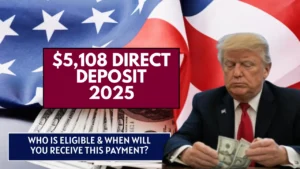Imagine finding a penny in your pocket worth $5 million. Sounds like a dream, right? The Lincoln Wheat Penny, a small coin from the early 1900s, could turn this fantasy into reality. Some rare versions are still out there, waiting to be discovered. Read on to learn how to spot one!
What Is the Lincoln Wheat Penny?
The Lincoln Wheat Penny, minted from 1909 to 1958, is a one-cent coin featuring Abraham Lincoln’s profile on the front and two wheat stalks on the back. Most are worth just a few cents, but rare versions, like the 1943 copper penny, can fetch millions due to minting errors or low production numbers.
The History of the Lincoln Wheat Penny
In 1909, the U.S. Mint released the Lincoln Wheat Penny to celebrate Abraham Lincoln’s 100th birthday. Designed by Victor David Brenner, it was the first U.S. coin to feature a real person, replacing the Indian Head Penny. The reverse, with its wheat stalks, symbolized America’s agricultural roots.
The coin’s debut sparked controversy. Brenner’s initials, “V.D.B.,” appeared on the reverse, causing a public outcry over self-promotion. The Mint quickly removed them, creating the rare 1909-S VDB variety. During World War II, copper shortages led to steel pennies in 1943, but a few copper blanks were mistakenly used, birthing the ultra-rare 1943 bronze penny.
Why Is It So Valuable Today?
The value of a Lincoln Wheat Penny depends on rarity, condition, and historical significance. Coins like the 1943 copper penny or 1909-S VDB are prized for their scarcity. For example, only a handful of 1943 copper pennies exist, making them numismatic legends. Condition also matters—mint-state coins fetch higher prices.
Collector demand drives up values, too. Stories of coins selling for millions, like a 1943-D bronze penny valued at $2.3 million, fuel excitement. Social media and online forums amplify this buzz, inspiring treasure hunters to check their change. These coins are tangible pieces of history, connecting us to America’s past.
Table 1: Key Rare Lincoln Wheat Pennies and Their Values
| Year | Mint Mark | Error/Feature | Estimated Value (Mint Condition) |
|---|---|---|---|
| 1909 | S, VDB | Designer’s Initials | Up to $100,000 |
| 1914 | D | Low Mintage | Up to $159,000 |
| 1943 | None/D/S | Copper Error | $1M–$5.5M |
| 1955 | None | Doubled Die | Up to $100,000 |
How to Find a Rare Lincoln Wheat Penny
You don’t need to be a numismatist to hunt for treasure. Rare Lincoln Wheat Pennies could be hiding in your pocket, piggy bank, or old coin jar. Here’s how to start your search:
- Check the Date and Mint Mark: Look for key years like 1909, 1914, 1931, or 1943. Mint marks (“S” for San Francisco, “D” for Denver) are under the date.
- Inspect for Errors: Look for doubled lettering (e.g., 1955 Doubled Die) or unusual coloring, like copper for 1943 pennies.
- Test 1943 Pennies: Most 1943 pennies are steel and magnetic, weighing 2.7 grams. A copper one is non-magnetic, weighs 3.1 grams, and could be worth millions.
- Search Smart Places: Check bank rolls, estate sales, antique shops, or inherited collections.
If you find a suspicious penny, don’t clean it—cleaning reduces value. Store it in a plastic holder and consult a professional grader like PCGS or NGC. Online auctions or coin dealers can help you sell for top dollar.
Notable Facts and Record-Breaking Sales
The Lincoln Wheat Penny has made headlines with jaw-dropping auction prices. Here are some highlights:
- A 1943-D bronze penny sold for $1.7 million in 2010 but is valued at $2.3 million today in mint condition.
- A 1909-S VDB penny, with only 484,000 minted, fetched $12,000 in worn condition in 2023.
- A 1955 Doubled Die penny can sell for $1,000+ in circulated condition, with mint-state versions exceeding $100,000.
Table 2: Record Auction Sales for Lincoln Wheat Pennies
| Year | Mint Mark | Sale Price | Auction Year | Notes |
|---|---|---|---|---|
| 1943 | D | $1.7M | 2010 | Bronze Error |
| 1909 | S, VDB | $258,000 | Unknown | Matte Proof |
| 1914 | D | $159,000 | Unknown | Low Mintage |
| 1944 | S | $1.1M | Unknown | Steel Error |
These sales prove that even a single penny can be a life-changer. The thrill of discovery keeps collectors and casual hunters searching.
Read More:
The $3.12M Lincoln Penny: History, Value, and How to Find It
The $815K Lincoln Wheat Penny: A Collector’s Ultimate Treasure
Expert Tips for Coin Hunters
Ready to join the hunt? Here are expert tips to boost your chances:
- Learn Key Dates: Memorize valuable years like 1909-S VDB, 1914-D, 1931-S, and 1943 copper.
- Use a Magnifying Glass: Errors like doubled dies are easier to spot with magnification.
- Join Coin Communities: Online forums and local coin clubs offer tips and trading opportunities.
- Avoid Fakes: Counterfeits, like plated steel 1943 pennies, are common. Use a magnet to test 1943 coins—copper won’t stick.
- Get Professional Grading: Services like PCGS or NGC authenticate and grade coins, maximizing value.
Frequently Asked Questions (FAQs)
How do I know if my 1943 penny is copper?
Check the color (copper vs. silver) and use a magnet. Steel pennies stick; copper ones don’t. Weigh it—copper pennies are 3.1 grams, steel are 2.7 grams.
Where can I sell a rare penny?
Try reputable coin dealers, auction houses like Heritage Auctions, or online platforms like eBay. Always get it graded first.
Are all Wheat Pennies valuable?
No, most are worth a few cents. Only specific years, mint marks, or errors like 1943 copper or 1955 Doubled Die fetch high prices.
Can I clean my penny to make it worth more?
Never clean coins! Cleaning damages the surface and lowers value. Store them carefully in plastic holders.
Are these pennies still in circulation?
Yes, rare pennies like the 1943 copper or 1909-S VDB could still be in change jars, bank rolls, or old collections.
Conclusion
The Lincoln Wheat Penny is more than pocket change—it’s a piece of American history with the potential to make you a millionaire. From the rare 1943 copper penny to the iconic 1909-S VDB, these coins spark excitement among collectors and casual hunters alike. Start checking your change, coin jars, or family heirlooms today. Who knows? That penny you overlooked could be worth $5 million. Share your finds with friends or join a coin club to dive deeper into this thrilling hobby. Happy hunting!




